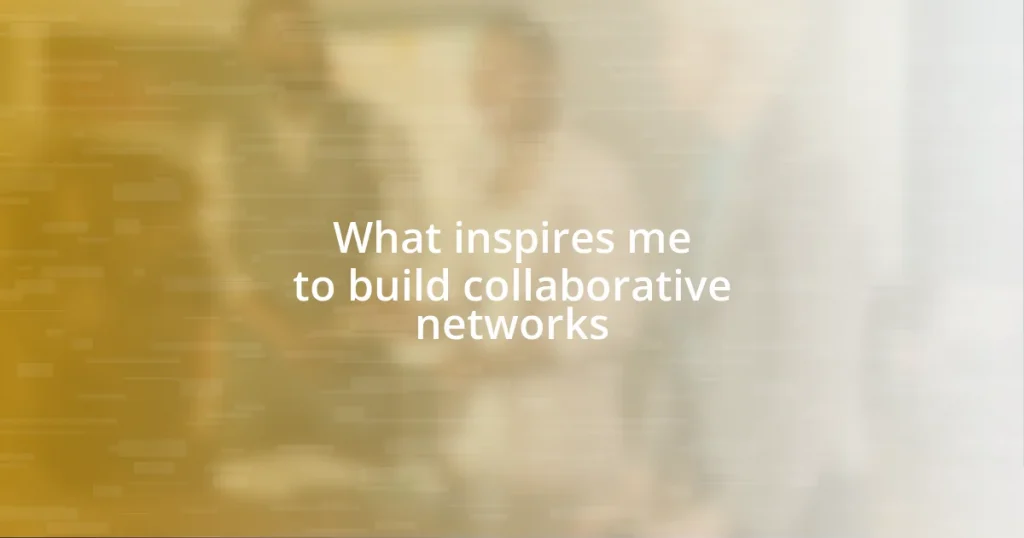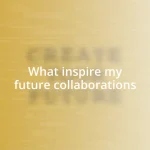Key takeaways:
- Trust and emotional investment are crucial for fostering collaboration, as they create a safe environment for open dialogue and innovative ideas.
- Identifying common goals enhances team alignment, making shared visions a powerful driver of collective motivation and accountability.
- Effective communication tools and inclusive practices significantly improve team dynamics, leading to richer contributions and stronger relationships.

Understanding collaborative networks
Collaborative networks are like intricate webs of connections where individuals and organizations unite for a shared purpose. I recall a project where my diverse team came together, each of us bringing unique skills to the table. It was a beautiful example of how synergy can lead to greater innovation; everyone’s contributions were valued, sparking creativity that we could never have achieved alone.
At the heart of these networks lies trust and mutual respect. I often wonder, what makes people truly open up and collaborate? In my experience, it’s the emotional investment in the relationship that fosters an environment where ideas can flourish. When we feel safe to share our thoughts without judgment, amazing things happen.
Understanding collaborative networks also involves recognizing the roles each member plays. I remember participating in a network where each individual’s strengths were mapped out. It was almost like rediscovering parts of ourselves through the lens of our community. Have you experienced that realization of how interconnected we all are? It’s a powerful reminder that our unique perspectives not only enrich the network but also affirm our individual value within it.
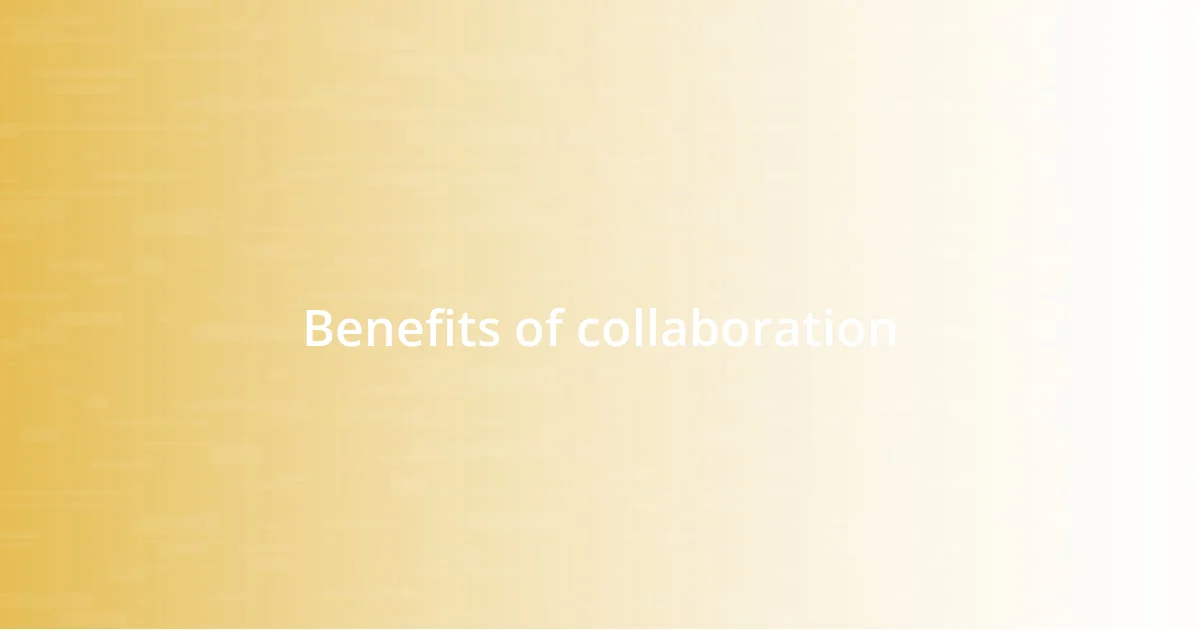
Benefits of collaboration
Collaboration offers a wealth of benefits that can transform individual efforts into collective achievements. During a recent initiative, I worked closely with a group where we pooled our skills to revamp a community program. Each person’s expertise brought new ideas and perspectives, creating a vibrant space where solutions flowed freely. This experience demonstrated how collaboration not only enhances productivity but also fosters strong relationships and emotional connections that enhance our commitment to shared goals.
Here are some key benefits of collaboration:
- Diverse Perspectives: Different backgrounds and experiences bring fresh ideas, leading to innovative solutions.
- Enhanced Problem-Solving: Working together allows for brainstorming, which can illuminate challenges and uncover effective strategies.
- Increased Efficiency: Tasks can be divided among team members, reducing individual workloads and speeding up project completion.
- Emotional Support: Collaborating creates a sense of community, easing stress and motivating team members to push through challenges.
- Skill Development: Team members can learn from each other, gaining new skills and insights that strengthen their own capabilities.
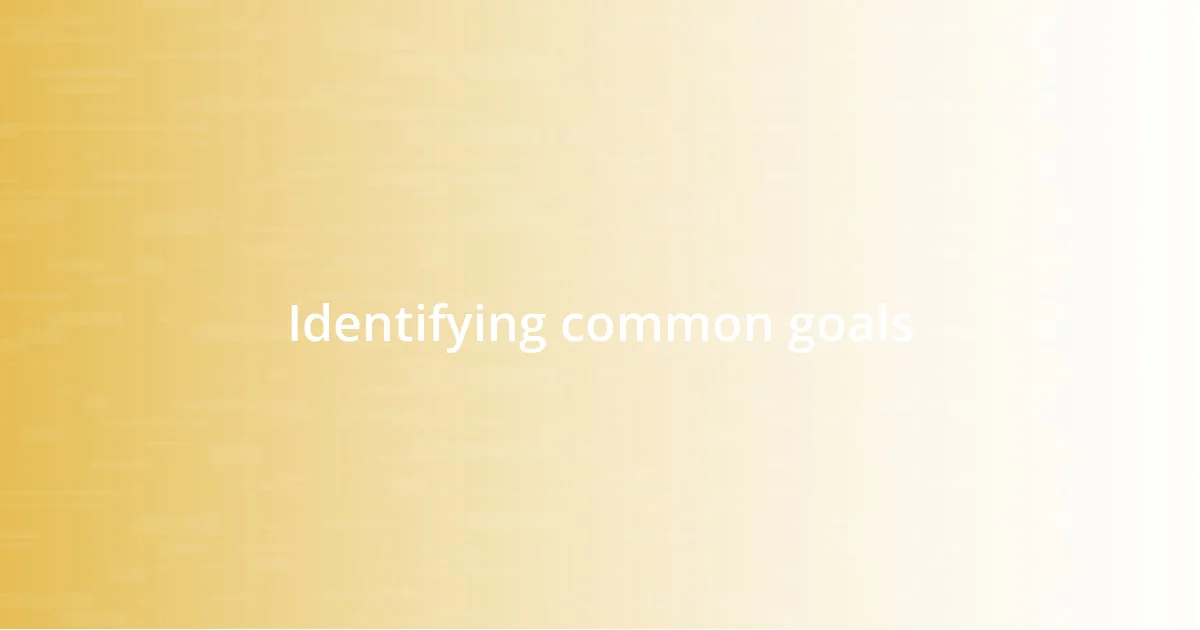
Identifying common goals
Identifying common goals is essential in creating a strong foundation for any collaborative network. In one project I participated in, we spent the first few meetings simply discussing our individual objectives. It was fascinating to see how, despite differing views, there were overlapping ambitions like improving community engagement. This alignment was the first step toward fostering a collective vision that everyone could rally behind.
When I think about goal-setting, I remember a workshop where we used visual aids to map our aspirations. Seeing everyone’s goals laid out visually created a palpable sense of unity. We transformed distinct ideas into a shared mission, which spurred a sense of accountability. Engaging discussions turned into actionable steps, fueling our motivation. It showed me how important it is to create a platform for open dialogue about our intentions and dreams.
Finding common ground can sometimes feel like a challenge, but it’s vital for sustainable collaboration. I recall a situation where one team member felt hesitant about voicing their goals. By encouraging their participation, we discovered that their aspirations aligned with ours more than we initially thought. This experience taught me that actively listening to one another can unveil opportunities for synergy that we might overlook otherwise.
| Aspect | Examples |
|---|---|
| Common Goal Identification | Shared community engagement initiative |
| Visual Mapping | Using charts to illustrate collective aspirations |
| Listening and Engagement | Encouraging quieter members to express their thoughts |
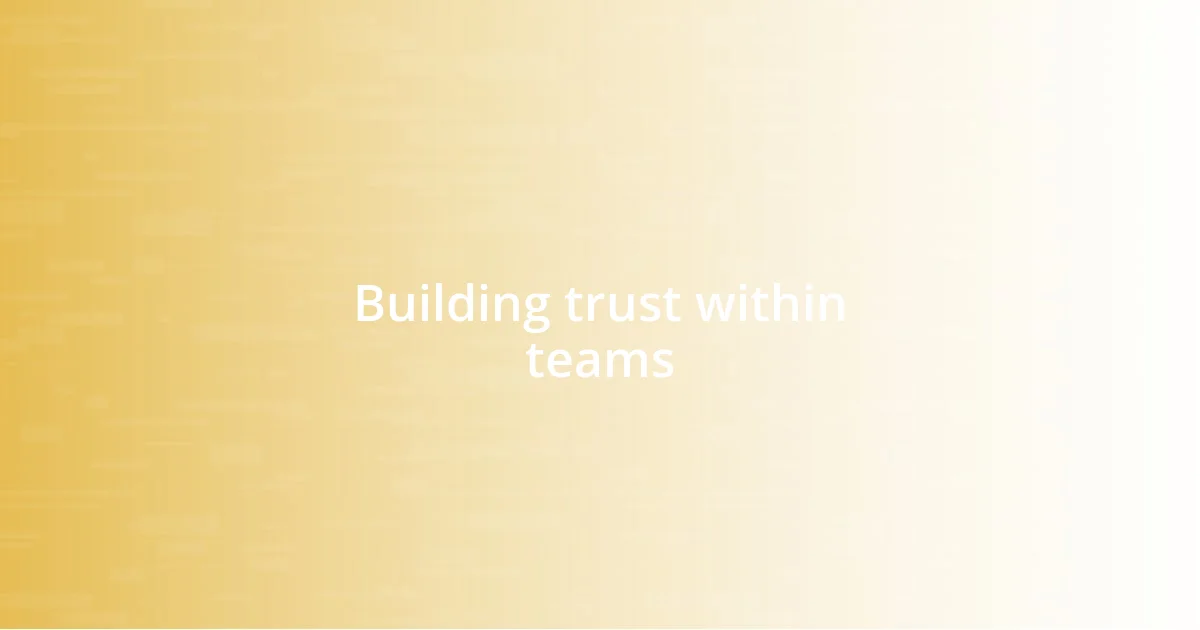
Building trust within teams
Building trust within teams is a cornerstone of effective collaboration. I remember a time when my team faced a significant hurdle during a project. We gathered in a small conference room, and instead of jumping straight into solutions, we took a moment to share our thoughts and feelings. This openness nurtured vulnerability and honesty, which were fundamental in creating a safe space where everyone felt valued and heard.
Trust isn’t built overnight; it requires consistent, genuine interactions. I learned that taking the time for team-building activities can foster deeper connections. One particular outing involved a simple cooking class. The shared laughter and camaraderie as we fumbled with ingredients revealed a side of each team member that wasn’t often seen in a formal setting. Have you ever noticed how informal scenarios can break down barriers and create genuine relationships? I surely have, and it reinforced my belief that these moments are crucial for team dynamics.
Additionally, acknowledging and addressing mistakes plays a pivotal role in trust-building. In a project I led, we experienced a setback that many might find discouraging. Instead of assigning blame, I encouraged an open discussion about what went wrong. This transparency turned a potential crisis into a learning opportunity, where team members felt safe to admit their errors. Trust thrives when everyone knows they can rely on each other’s support, fostering a more resilient and engaged team atmosphere.
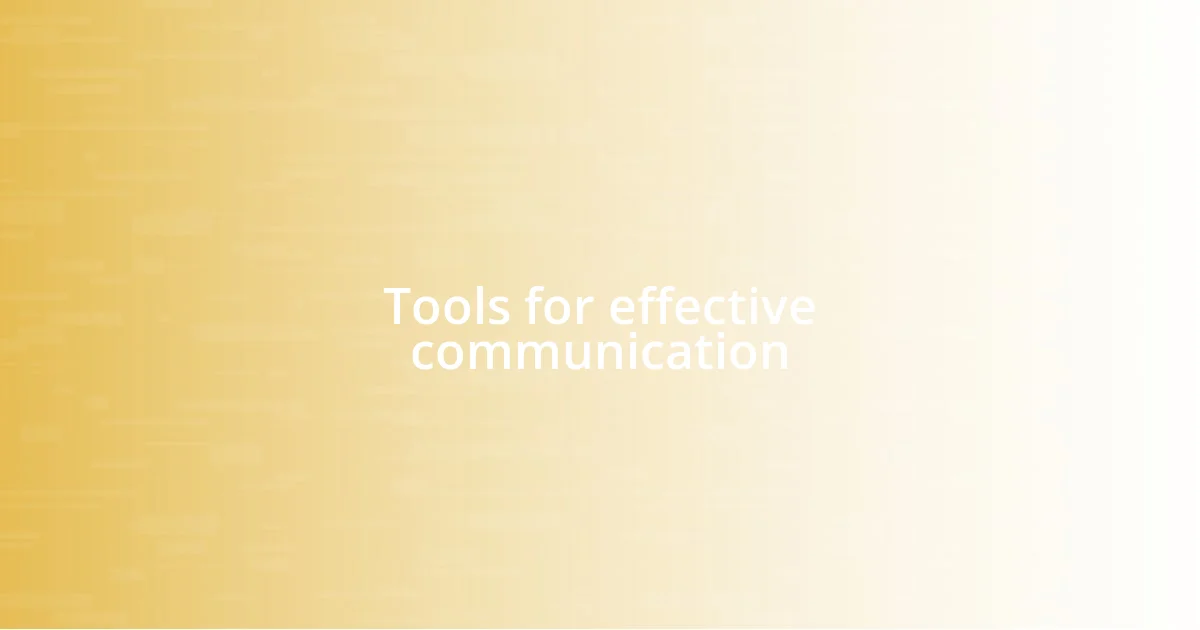
Tools for effective communication
Effective communication tools are essential for any collaborative network. I’ve found that platforms like Slack and Microsoft Teams can transform the way team members interact. For instance, I once worked on a project where we used dedicated channels for different topics. This organization eliminated the chaos of endless email threads and ensured everyone felt included in real-time discussions. Isn’t it incredible how the right tools can foster a more dynamic exchange of ideas?
I also believe in the power of video conferencing tools like Zoom or Google Meet. They bring a human element to conversations that text alone can’t convey. I remember a project kickoff meeting where seeing everyone’s expressions made a huge difference. It created a shared energy and enthusiasm that mere written words could never match. The visual cues helped us connect on a deeper level, making discussions more meaningful. Have you ever noticed how a simple smile or nod can convey support and understanding?
Lastly, I’ve come to appreciate collaborative document platforms like Google Docs. They allow for real-time feedback and brainstorming, which I find invaluable. In one instance, my team worked late into the night on a shared document, feeding off each other’s ideas. The thrill of seeing our collective thoughts evolve was exhilarating. It felt like we were crafting something more substantial together and not just as individuals. These tools are more than just conveniences; they are the lifeblood of effective collaborative communication.
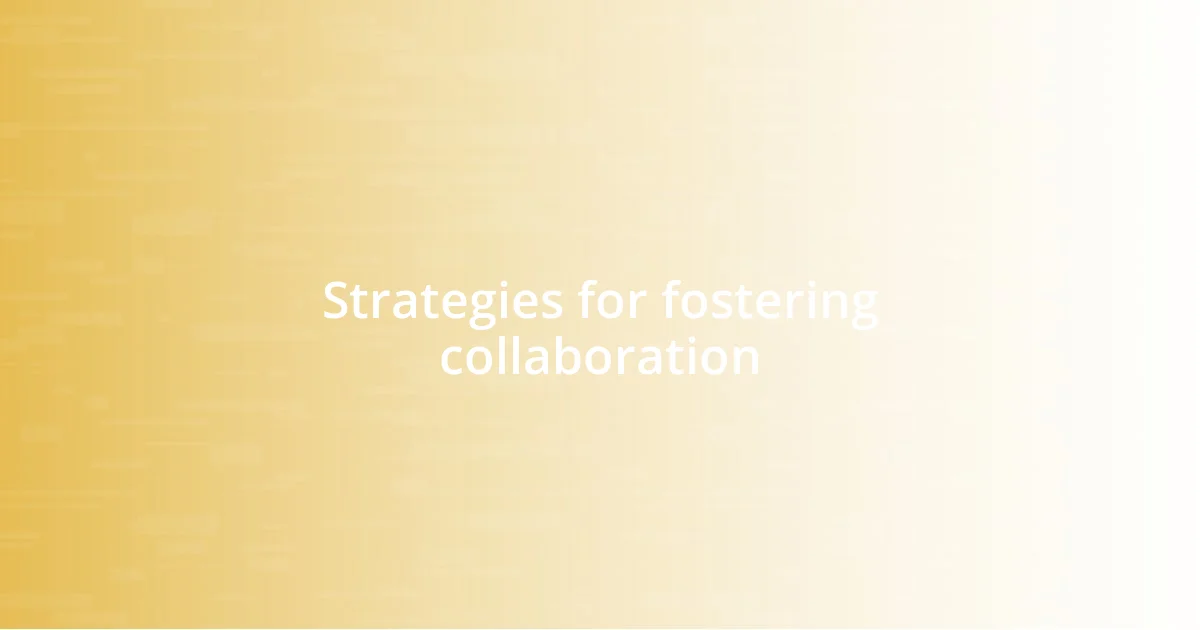
Strategies for fostering collaboration

Creating a shared vision
Establishing a shared vision is a powerful catalyst for collaboration. I recall a time when our team struggled with diverging goals during a project. We decided to hold a brainstorming session where each member shared their ideas and aspirations for the project. The energy in that room was electric; it felt like each suggestion built on the one before it, culminating in a united purpose. Isn’t it fascinating how aligning our goals can invigorate the entire team?
Moreover, regular check-ins to revisit our shared vision became routine. I found that these moments provided a platform for reflection and showcased how each individual’s contributions aligned with our collective aim. It was during one of these check-ins that a teammate shared a personal story about their connection to the project, which reignited everyone’s passion. Experiences like these remind me of the importance of emotional investment in achieving our objectives together. How often do you see your team’s energy shift when they reconnect with the “why” behind their work?
Lastly, celebrating small milestones kept our spirits high and reaffirmed our joint commitment. Each time we accomplished a goal, no matter how small, we took the time to acknowledge it. I remember the excitement when we completed the first phase of our project; we treated ourselves to a little celebration. Those moments not only fostered a sense of achievement but also strengthened our bond. The shared excitement created a ripple effect, encouraging us to push through challenges together. It’s incredible how such rituals can turn a team into a family, don’t you think?
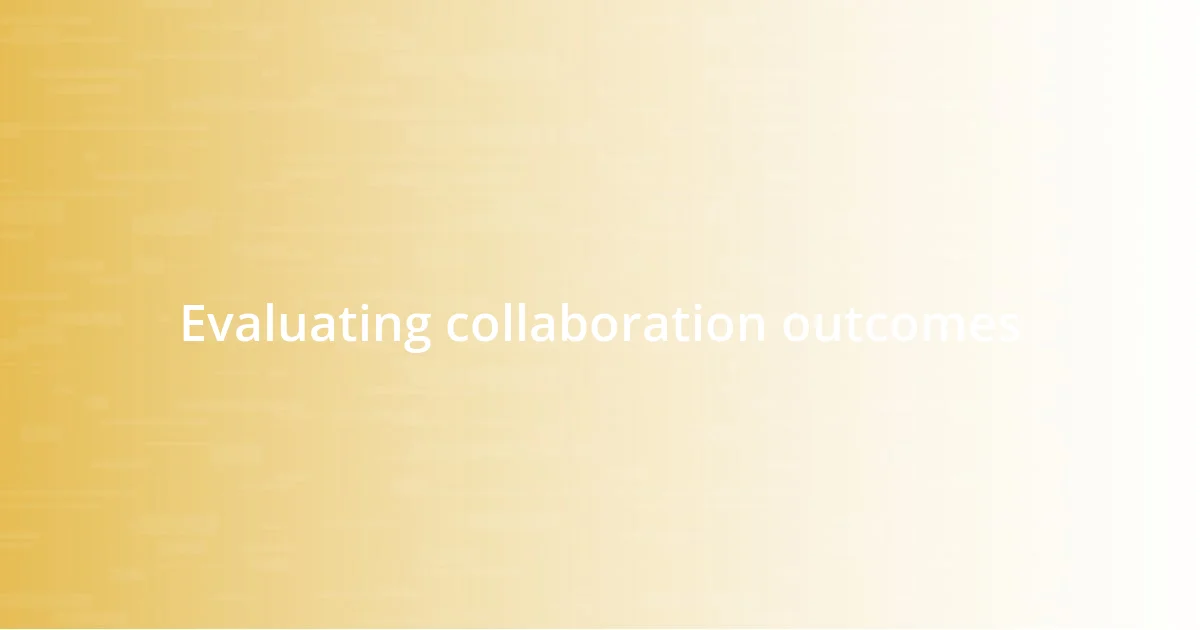
Encouraging inclusivity
Fostering an inclusive environment is critical for collaboration to flourish. During one project, I noticed that a few voices were getting drowned out in discussions. I decided to initiate a roundtable format where everyone had a dedicated time to share their ideas. The change was palpable; even the quietest members opened up, revealing insights that transformed our approach. Have you ever experienced how simply changing the format of a meeting can unlock hidden potential?
Equally important is valuing diverse perspectives. I make it a point to actively seek out opinions from various team members, especially those who tend to hold back. I remember one particular instance where a team member proposed a completely different angle on a problem we were facing. Their fresh perspective led us to a solution we hadn’t considered, showcasing how crucial it is to encourage everyone to step forward. It’s moments like these that highlight the richness of our collective intelligence, don’t you agree?
Lastly, I always emphasize the importance of feedback loops in my teams. I encourage open conversations about what works and what doesn’t, creating a safe space for discussion. Once, after a challenging project, we held a retro session where team members shared both praises and concerns. The honesty in that room was invigorating, and the insights we gathered reshaped our future collaborations. I often wonder how much can be achieved when we foster a culture of openness—after all, isn’t that what collaboration is all about?

Evaluating collaboration outcomes
Evaluating collaboration outcomes requires a thoughtful approach. In my experience, I’ve found that measuring success isn’t just about checking off completed tasks. It’s about how well the team collaborated to achieve those goals. For instance, after a recent project, we took time to assess not just the final deliverables but also the dynamics within the team. Reflecting on our interactions revealed that our open forums for feedback, where everyone’s voice was encouraged, played a monumental role in our success. Have you ever noticed how discussions about process can illuminate areas for growth?
I’ve also discovered that using specific metrics can offer valuable insights. We often track key performance indicators (KPIs), such as engagement levels or response times to messages, but I’ve learned to go deeper. During one project, we measured collaborative efforts through post-project surveys, asking how connected team members felt throughout the process. The results were eye-opening. Many felt more engaged due to our use of structured brainstorming sessions, which made it easier to collaborate. Isn’t it fascinating how quantifying emotions can provide a clearer picture of a team’s health?
Finally, I cannot emphasize enough the importance of storytelling in evaluations. Sharing narratives from the collaboration process brings lessons to life. I remember one team member’s story about a challenge they faced and how asking for help from a colleague led to a breakthrough. It was a powerful reminder that, beyond metrics and surveys, the heart of collaboration lies in our shared human experiences. How often do we overlook the stories that can teach us so much about our working relationships?










